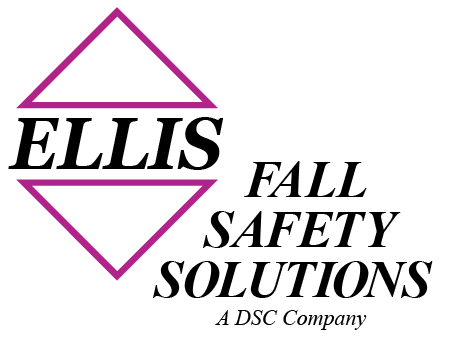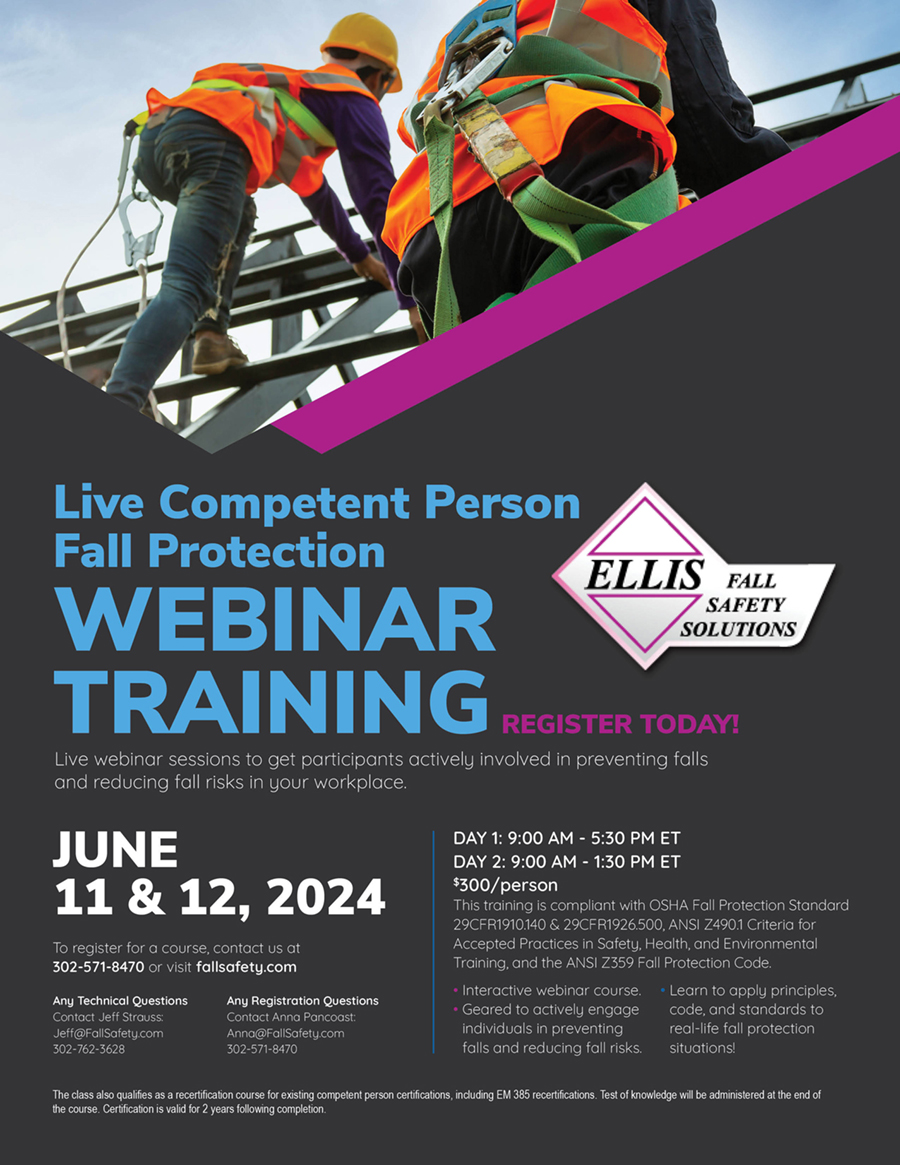Back To FAQ Topics
I am the Safety Director with the Twin Cites Roofing Contractors Association. We had you out as a guest speaker in March in conjunction with the Roofers International union. I have a very unique project coming up with one of my contractors. I have MN OSHA consultation involved as well. We will be waterproofing the small areas between the skylights. We are working with DBI Sala on the proper fall arrest equipment and we pretty much have that taken care of. The MN OSHA consultant and I are trying to figure out a way to cover these and still allow work to be done on the areas between the skylights, and we don’t seem to have much of an option. We are working about 170-200 feet above an indoor area at a major Minneapolis office building. The area below will not be able to be closed off, it is a large indoor courtyard. The main concern with MN OSHA is someone leaning on one of these skylights or a skylight possibly breaking and falling on the general public below. These skylights are about 30 years old, and are not being replaced at this time. We are going to scaffold each leading edge where the elevation drops, but I don’t think there is a good option for protecting the skylights themselves. Have you ever seen anything like this? Any thoughts of yours would be appreciated.
Best if feasible to contact the manufacturer. If it still is in production, the manufacturer should certainly have a protective screen available or at least some advice which should be interesting. When I did my home flat roof with skylights, we used plywood shaped to the size of the skylight supported by the skylight frame/curb. This might work for a few at a time of the profusion of skylights close to each other in the building to be caulked in between the skylights themselves. I am assuming they are plastic. The chance of impacting one or more is high and you do not want dangling on a lifeline so high off the ground. Create a crane installed set of plywood frames that can get work done easily in a protected area to justify the crane cost. What do you think?
I’m interesed in understanding the number of falls, injuries, and deaths each year related to overhead glazing/skylights, looking at both the residential and the commercial market segments.
The Bureau of Labor Statistics (BLS) is the way to find occupational reported deaths. Severe injury can be 300 times this number looking at the general work falls statistics. (see National Safety Council Injury Facts). Of course, these statistics assume there must be a responsible employer to report deaths. The number of skylight deaths is reported fairly stable at 35 through skylights for the past several years in BLS annual data through 2005. The NIOSH FACE reports give some good detail on fatalities in ocupational settings; check the 2000 publication of Fatal Falls. The two NIOSH Hazard Alerts on skylights show mostly plastic bubble and corrugated fiberglass fall-throughs. Only 1% skylights have structural railings or screens per Plasteco’s President Key Sandow. Residential skylight failures should be available through NEISS reports and CPSC records. The lack of durability of skylights in general is one reason that OSHA 1926.500-503 construction regs refer to skylights as “open holes”. Key Sandow has recent reports of brand new, 2 year old and on up into 40 year old failures.
I have a client that OSHA has requierd fall protection security grid, or bars, to be installed in existing skylights. I know of an existing company that installs so-called security bars but no one can provide OSHA approved status. Please advise who and where I might buy OSHA approved fall protection grid system that can be retrofitted.
The best bet are the screens that go on the outside of the skylight. Having the victim fall through the skylight onto burglar bars is not a safety solution although it may address security. I say that if burglar bars are necessary for wilful entry into a building they should go hand-in-hand with screens such as Plasteco products – www.plasteco.com or www.trufast.com or www.kalwall.com or your skylight manufacturer. I don’t believe that Arizona OSHA would approve burglar bars over screens. Burglar bars are typically made out of rebar with six inch gaps and not engineered for fall protection. The Fed. OSHA interpretation of 1984 is not valid in my opinion. The 1994 construction standards where skylights are treated as an open hole is the correct approach.
Is there any information about the progress of the Fall Protection design for the Skylights and other Roof openings, are there meetings in progress?
Watch the E6.50.25 Collaboration Area in October 2009 for the draft technical requirements for skylight testing.
1-3 percent of skylights CAN support a person in the US. Correct?
Trick question! You will never know until it is too late with any plastic. As one senior OSHA compliance officer explains: plastic skylights break like eggshells. UV degradation does play a strong part over a short time. Warranties are presently 2-5 years. 5 years is Florida Building Code – Miami Dade counties test to reduce shards (ANSI A97.1). However roof products in general have a 20 year goal and no plastic can meet that goal without screens. Many companies, including Wal-Mart for their Super Stores, have adopted screens below the skylight to additionally reduce burglaries. However, fall-throughs of 3-5 ft will be more injurious than top-mounted screens. ASTM E06.51.25 draft Skylight test is three drops through three feet using 10″ diameter boxer punch bag using lead weights. It is best if laminated or tempered glass replaces plastic – no known fall-throughs with laminated glass – probably max size 4’x4′ and multiple groupings to reduce weight factor. Skylight frame must be similar coefficient of expansion as glass; possibly aliphatic polyurethane – one system has AAMA gold star rating including accelerated Xenon testing with 20 year lifetime rating.
I am the Safety Director with the Twin Cites Roofing Contractors Association. We had you out as a guest speaker in March in conjunction with the Roofers International union. I have a very unique project coming up with one of my contractors. I have MN OSHA consultation involved as well. We will be waterproofing the small areas between the skylights. We are working with DBI Sala on the proper fall arrest equipment and we pretty much have that taken care of. The MN OSHA consultant and I are trying to figure out a way to cover these and still allow work to be done on the areas between the skylights, and we don’t seem to have much of an option. We are working about 170-200 feet above an indoor area at a major Minneapolis office building. The area below will not be able to be closed off, it is a large indoor courtyard. The main concern with MN OSHA is someone leaning on one of these skylights or a skylight possibly breaking and falling on the general public below. These skylights are about 30 years old, and are not being replaced at this time. We are going to scaffold each leading edge where the elevation drops, but I don’t think there is a good option for protecting the skylights themselves. Have you ever seen anything like this? Any thoughts of yours would be appreciated.
Best if feasible to contact the manufacturer. If it still is in production, the manufacturer should certainly have a protective screen available or at least some advice which should be interesting. When I did my home flat roof with skylights, we used plywood shaped to the size of the skylight supported by the skylight frame/curb. This might work for a few at a time of the profusion of skylights close to each other in the building to be caulked in between the skylights themselves. I am assuming they are plastic. The chance of impacting one or more is high and you do not want dangling on a lifeline so high off the ground. Create a crane installed set of plywood frames that can get work done easily in a protected area to justify the crane cost. What do you think?
I’m interesed in understanding the number of falls, injuries, and deaths each year related to overhead glazing/skylights, looking at both the residential and the commercial market segments.
The Bureau of Labor Statistics (BLS) is the way to find occupational reported deaths. Severe injury can be 300 times this number looking at the general work falls statistics. (see National Safety Council Injury Facts). Of course, these statistics assume there must be a responsible employer to report deaths. The number of skylight deaths is reported fairly stable at 35 through skylights for the past several years in BLS annual data through 2005. The NIOSH FACE reports give some good detail on fatalities in ocupational settings; check the 2000 publication of Fatal Falls. The two NIOSH Hazard Alerts on skylights show mostly plastic bubble and corrugated fiberglass fall-throughs. Only 1% skylights have structural railings or screens per Plasteco’s President Key Sandow. Residential skylight failures should be available through NEISS reports and CPSC records. The lack of durability of skylights in general is one reason that OSHA 1926.500-503 construction regs refer to skylights as “open holes”. Key Sandow has recent reports of brand new, 2 year old and on up into 40 year old failures.
I have a client that OSHA has requierd fall protection security grid, or bars, to be installed in existing skylights. I know of an existing company that installs so-called security bars but no one can provide OSHA approved status. Please advise who and where I might buy OSHA approved fall protection grid system that can be retrofitted.
The best bet are the screens that go on the outside of the skylight. Having the victim fall through the skylight onto burglar bars is not a safety solution although it may address security. I say that if burglar bars are necessary for wilful entry into a building they should go hand-in-hand with screens such as Plasteco products – www.plasteco.com or www.trufast.com or www.kalwall.com or your skylight manufacturer. I don’t believe that Arizona OSHA would approve burglar bars over screens. Burglar bars are typically made out of rebar with six inch gaps and not engineered for fall protection. The Fed. OSHA interpretation of 1984 is not valid in my opinion. The 1994 construction standards where skylights are treated as an open hole is the correct approach.
Is there any information about the progress of the Fall Protection design for the Skylights and other Roof openings, are there meetings in progress?
Watch the E6.50.25 Collaboration Area in October 2009 for the draft technical requirements for skylight testing.
1-3 percent of skylights CAN support a person in the US. Correct?
Trick question! You will never know until it is too late with any plastic. As one senior OSHA compliance officer explains: plastic skylights break like eggshells. UV degradation does play a strong part over a short time. Warranties are presently 2-5 years. 5 years is Florida Building Code – Miami Dade counties test to reduce shards (ANSI A97.1). However roof products in general have a 20 year goal and no plastic can meet that goal without screens. Many companies, including Wal-Mart for their Super Stores, have adopted screens below the skylight to additionally reduce burglaries. However, fall-throughs of 3-5 ft will be more injurious than top-mounted screens. ASTM E06.51.25 draft Skylight test is three drops through three feet using 10″ diameter boxer punch bag using lead weights. It is best if laminated or tempered glass replaces plastic – no known fall-throughs with laminated glass – probably max size 4’x4′ and multiple groupings to reduce weight factor. Skylight frame must be similar coefficient of expansion as glass; possibly aliphatic polyurethane – one system has AAMA gold star rating including accelerated Xenon testing with 20 year lifetime rating.

